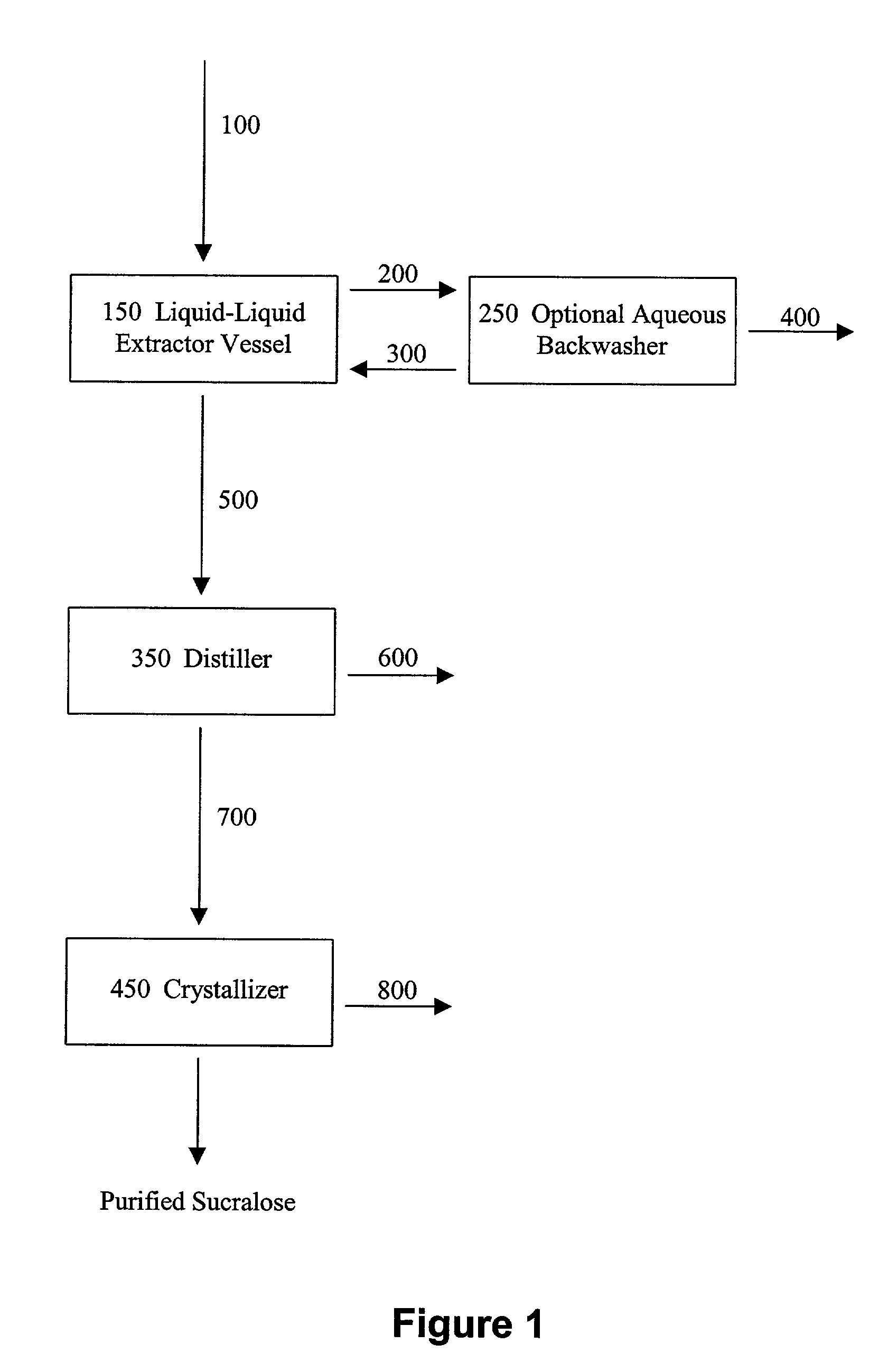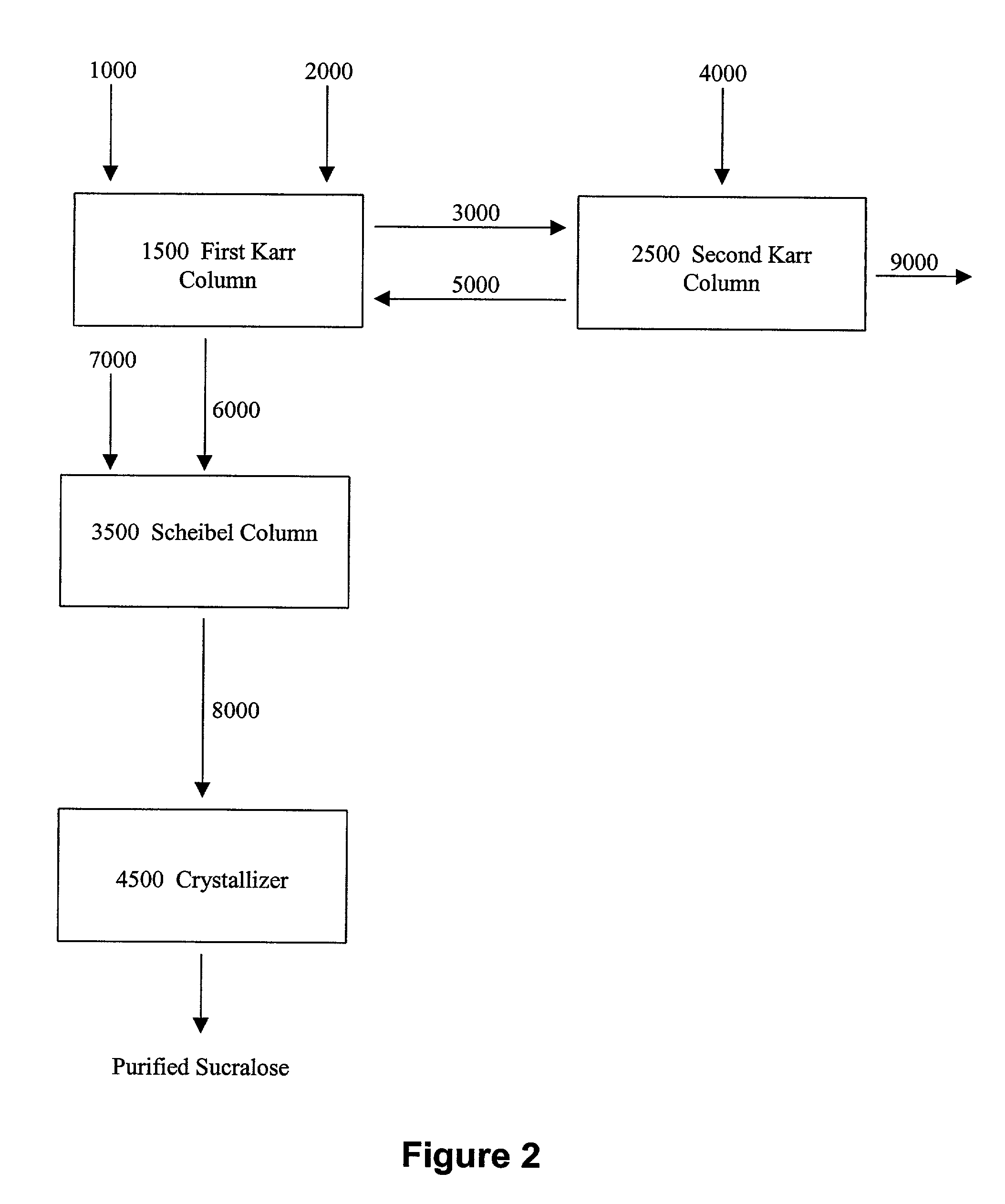Extractive methods for purifying sucralose
a technology of sucralose and purification method, which is applied in the direction of sugar derivates, organic chemistry, esterified saccharide compounds, etc., can solve the problems of inability to achieve high-purity sucralose production. large-scale commercial production
- Summary
- Abstract
- Description
- Claims
- Application Information
AI Technical Summary
Problems solved by technology
Method used
Image
Examples
example 1
[0056]A sucralose solution containing various impurities can be obtained by a number of previously disclosed processes for synthesizing sucralose. See, e.g., U.S. Pat. No. 5,498,709. In an embodiment of the present invention, a 6-O-acyl sucralose derivative was deacylated and steam stripped to remove any dimethylformamide remaining from the chlorination reaction. This resulted in an aqueous solution containing sucralose, residual acylated sucralose, other halogenated sugar derivatives, and organic and inorganic salts.
[0057]This aqueous solution was introduced into a vessel suitable for liquid-liquid extraction, specifically, a linch diameter by 12 foot tall Karr reciprocating plate column (Koch, Inc., Kansas City, Mo.). The backwash was accomplished in a 2 inch diameter by 12 foot Karr column. There were 2 foot×6 inch diameter disengaging sections at the top and bottom of the columns.
[0058]The columns consisted of glass tubes with stainless steel plates with ⅜ inch holes supported f...
example 2
[0069]An aqueous sucralose solution obtained by alkaline deacylation of a 6-O-acetyl precursor and subsequent neutralization was introduced into a Karr column with an internal diameter of 42 inches and an agitated height of 50 feet. Water-saturated ethyl acetate was introduced into the column at a ratio of 0.35:1 (0.35 parts of ethyl acetate to 1 part aqueous sucralose solution). Two phases were obtained from the column. The ethyl acetate phase was introduced into a Karr column with a 42 inch inside diameter and an agitated height of 58 feet. Water was also introduced into the column so that the ratio of water to the ethyl acetate phase was 0.7:1.0. The aqueous solution obtained from this backwash was combined with the original feed and fed to the first extraction. The aqueous phase from the first ethyl acetate extraction was introduced into a Scheibel column (Koch, Inc., Kansas City, Mo.) with an inside diameter of 56 inches, and agitated height of 33 feet. The column contained two...
PUM
| Property | Measurement | Unit |
|---|---|---|
| diameter | aaaaa | aaaaa |
| diameter | aaaaa | aaaaa |
| diameter | aaaaa | aaaaa |
Abstract
Description
Claims
Application Information
 Login to View More
Login to View More - R&D
- Intellectual Property
- Life Sciences
- Materials
- Tech Scout
- Unparalleled Data Quality
- Higher Quality Content
- 60% Fewer Hallucinations
Browse by: Latest US Patents, China's latest patents, Technical Efficacy Thesaurus, Application Domain, Technology Topic, Popular Technical Reports.
© 2025 PatSnap. All rights reserved.Legal|Privacy policy|Modern Slavery Act Transparency Statement|Sitemap|About US| Contact US: help@patsnap.com


